
USS Winston S. Churchill (DDG-81) is an Arleigh Burke-class destroyer of the United States Navy. She is named after Sir Winston Churchill, former Prime Minister of the United Kingdom. This ship is the 31st destroyer of her class. Winston S. Churchill was the 18th ship of this class to be built at Bath Iron Works in Bath, Maine, and construction began on 7 May 1998. She was launched and christened on 17 April 1999. On 10 March 2001, she was commissioned during a ceremony at Town Point Park in Norfolk, Virginia.

Operation Torch was an Allied invasion of French North Africa during the Second World War. Torch was a compromise operation that met the British objective of securing victory in North Africa while allowing American armed forces the opportunity to engage in the fight against Nazi Germany and Fascist Italy on a limited scale. It was the first mass involvement of US troops in the European–North African Theatre, and saw the first major airborne assault carried out by the United States.

Jean Louis Xavier François Darlan was a French admiral and political figure. Born in Nérac, Darlan graduated from the École navale in 1902 and quickly advanced through the ranks following his service during World War I. He was promoted to rear admiral in 1929, vice admiral in 1932, lieutenant admiral in 1937 before finally being made admiral and Chief of the Naval Staff in 1937. In 1939, Darlan was promoted to admiral of the fleet, a rank created specifically for him.

USS Dwight D. Eisenhower (CVN-69) is a nuclear-powered aircraft carrier currently in service with the United States Navy. Commissioned in 1977, the ship is the second of the ten Nimitz-class aircraft carriers currently in service, and is the first ship named after the 34th President of the United States and General of the Army Dwight D. Eisenhower. The vessel was initially named simply as USS Eisenhower, much like the lead ship of the class, Nimitz, but the name was changed to its present form on 25 May 1970. The carrier, like all others of her class, was constructed at Newport News Shipbuilding Company in Virginia, with the same design as the lead ship, although the ship has been overhauled twice to bring her up to the standards of those constructed more recently.

The Fifth Fleet is a numbered fleet of the United States Navy. It has been responsible for naval forces in the Persian Gulf, Red Sea, Arabian Sea, and parts of the Indian Ocean since 1995 after a 48-year hiatus. It shares a commander and headquarters with U.S. Naval Forces Central Command (NAVCENT) in Bahrain. Fifth Fleet/NAVCENT is a component command of, and reports to, U.S. Central Command (CENTCOM).
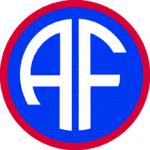
Allied Force Headquarters (AFHQ) was the headquarters that controlled all Allied operational forces in the Mediterranean theatre of World War II from August 1942 until the end of the war in Europe in May 1945.

Admiral of the Fleet Andrew Browne Cunningham, 1st Viscount Cunningham of Hyndhope, was a British officer of the Royal Navy during the Second World War. He was widely known by his initials, "ABC".

The attack on Mers-el-Kébir on 3 July 1940, during the Second World War, was a British naval attack on neutral French Navy ships at the naval base at Mers El Kébir, near Oran, on the coast of French Algeria. The attack was the main part of Operation Catapult, a British plan to neutralise or destroy neutral French ships to prevent them from falling into German hands after the Allied defeat in the Battle of France. The British bombardment of the base killed 1,297 French servicemen, sank a battleship and damaged five other ships, for a British loss of five aircraft shot down and two crewmen killed. The attack by air and sea was conducted by the Royal Navy, after France had signed armistices with Germany and Italy, coming into effect on 25 June.
HMS Seraph was an S-class submarine built for the Royal Navy during the Second World War. Completed in 1942, she carried out multiple intelligence and special operations activities during World War II, the most notable of which was Operation Mincemeat.
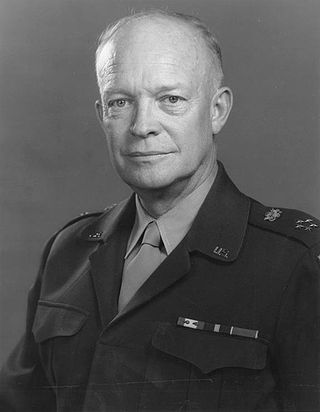
The military career of Dwight D. Eisenhower began in June 1911, when Eisenhower took the oath as a cadet at the United States Military Academy at West Point. He graduated from West Point and was commissioned as a second lieutenant in the United States Army in June 1915, in the same class as Omar Bradley. He rose through the ranks over the next thirty years and became one of the most important Allied generals of World War II, being promoted to General of the Army in 1944. Eisenhower retired from the military after winning the 1952 presidential election, though his rank as General of the Army was restored by an act of Congress in March 1961.

Admiral Sir Harold Martin Burrough was a senior Royal Navy officer and Assistant Chief of Naval Staff to the Royal Navy during World War II.

The military history of Gibraltar during World War II exemplifies Gibraltar's position as a British fortress since the early 18th century and as a vital factor in British military strategy, both as a foothold on the continent of Europe, and as a bastion of British sea power. During World War II, Gibraltar served a vital role in both the Atlantic Theatre and the Mediterranean Theatre, controlling virtually all naval traffic into and out of the Mediterranean Sea from the Atlantic Ocean.
The French State, popularly known as Vichy France, as led by Marshal Philippe Pétain after the Fall of France in 1940 before Nazi Germany, was quickly recognized by the Allies, as well as by the Soviet Union, until 30 June 1941 and Operation Barbarossa. However, France broke with the United Kingdom after the destruction of the French Fleet at Mers-el-Kebir. Canada maintained diplomatic relations until the occupation of Southern France by Germany and Italy in November 1942.
The Second Washington Conference, did not have a code name because it was hastily called and was regarded at the time as a set of military staff conversations rather than a formal conference. The two delegations were led by the British Prime Minister Winston Churchill and the American President Franklin D. Roosevelt.
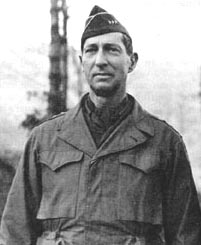
Operation Flagpole was part of the run-up to Operation Torch, the planned Allied invasion of North Africa during World War II. It involved arranging for and carrying out a top-secret high-level meeting between U.S. General Mark W. Clark, representing the Allies, and Général Charles E. Mast, the leader of a group of pro-Allied Vichy France officers in French North Africa, to secure their cooperation with the invasion.
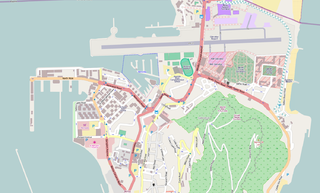
Devil's Tower Road is a road in the British Overseas Territory of Gibraltar. The road, in the northeastern part of the settlement, runs south of Gibraltar International Airport, from Winston Churchill Avenue southeast to Eastern Beach Road. It was named after Devil's Tower, a seventeenth-century watchtower that was formerly at the eastern end of the road. By 2011, Devil's Tower Road had been changed to a dual carriageway, with on-street parking eliminated, and the Government's plan to change the name of the road to North Front Avenue met with community opposition. A new access road was planned, such that Winston Churchill Avenue, which crosses the airport runway, would no longer serve as the main road to the Gibraltar-Spain border to intersect with Devil's Tower Road after passing under the eastern edge of the runway. The new road and tunnel, named Kingsway with the approval of Charles III, was officially opened on 31st March 2023.

The Gibraltar Cross of Sacrifice is a war memorial in the British Overseas Territory of Gibraltar. It is located west of North Front Cemetery, at the junction of Winston Churchill Avenue and Devil's Tower Road. The Cross of Sacrifice was designed by Sir Reginald Blomfield in 1917, and his monument is found in numerous Commonwealth War Graves Commission cemeteries. The cross in Gibraltar was erected by the Royal Engineers for the commission, and unveiled on Armistice Day 1922. The British Pathé film recorded at the dedication ceremony that day represents the first motion picture made in Gibraltar. The Gibraltar Cross of Sacrifice served as the focus of Remembrance Sunday ceremonies in Gibraltar until 2009, at which time the location was changed to the Gibraltar War Memorial.
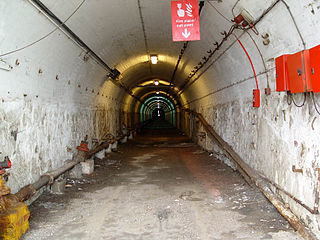
Admiralty Tunnel is a tunnel in Gibraltar. The tunnel was used for the purpose of bringing stone from the east side. During the Second World War the tunnel contained an operations centre where Dwight Eisenhower planned Operation Torch. As of 2013, the operations centre is used to house a secure data facility.
Operation Kingpin was part of the run-up to Operation Torch, the planned Allied invasion of North Africa during World War II. It was a successor to Operation Flagpole, in which a secret meeting between U.S. General Mark W. Clark and diplomat Robert Murphy, representing the Allies, and General Charles E. Mast, the leader of a group of pro-Allied Vichy France officers in French North Africa, was arranged to secure their cooperation with the invasion. In Operation Kingpin, French General Henri Giraud, code-named "Kingpin", was released from confinement and brought to Gibraltar to meet with Operation Torch commander General Dwight D. Eisenhower and Clark in order to secure his cooperation with the invasion.
The French Civil and Military High Command was an administrative and military governing body in Algiers that was created in connection with the Allied landings in French North Africa on 7 and 8 November 1942 as part of Operation Torch. It came about as a result of negotiations between the Americans and two military figures from Vichy France whom the Americans believed could assure safe passage for the landing forces, namely Henri Giraud and François Darlan.



















